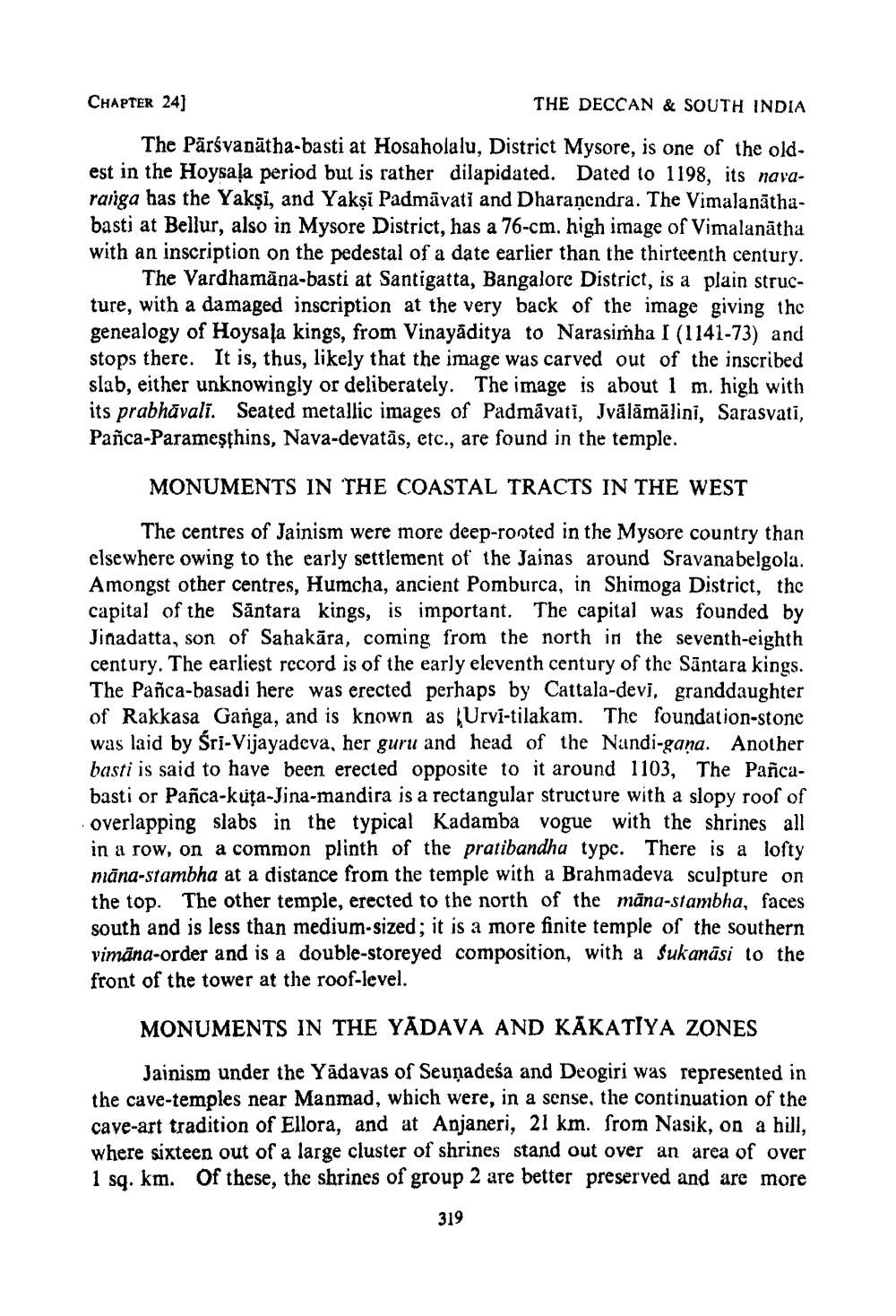________________
CHAPTER 24]
THE DECCAN & SOUTH INDIA
The Pärsvanātha-basti at Hosaholalu, District Mysore, is one of the oldest in the Hoysala period but is rather dilapidated. Dated to 1198, its navaraiga has the Yakşi, and Yaksi Padmăvati and Dharanсndra. The Vimalanāthabasti at Bellur, also in Mysore District, has a 76-cm. high image of Vimalanātha with an inscription on the pedestal of a date earlier than the thirteenth century.
The Vardhamāna-basti at Santigatta, Bangalore District, is a plain structure, with a damaged inscription at the very back of the image giving the genealogy of Hoysala kings, from Vinayaditya to Narasimha I (1141-73) and stops there. It is, thus, likely that the image was carved out of the inscribed slab, either unknowingly or deliberately. The image is about 1 m. high with its prabhāvali. Seated metallic images of Padmavati, Jvālāmālini, Sarasvati, Pañca-Parameşthins, Nava-devatās, etc., are found in the temple.
MONUMENTS IN THE COASTAL TRACTS IN THE WEST
The centres of Jainism were more deep-rooted in the Mysore country than elsewhere owing to the early settlement of the Jainas around Sravanabelgola. Amongst other centres, Humcha, ancient Pomburca, in Shimoga District, the capital of the Sāntara kings, is important. The capital was founded by Jinadatta, son of Sahakāra, coming from the north in the seventh-eighth century. The earliest record is of the early eleventh century of the Sāntara kings. The Pañca-basadi here was erected perhaps by Cattala-devi, granddaughter of Rakkasa Ganga, and is known as Urvī-tilakam. The foundation-stone was laid by Sri-Vijayadeva, her guru and head of the Nandi-gana. Another basti is said to have been erected opposite to it around 1103, The Panca
sti or Panca-kuta-Jina-mandira is a rectangular structure with a slopy roof of overlapping slabs in the typical Kadamba vogue with the shrines all in a row, on a common plinth of the pratibandhu type. There is a lofty māna-stambha at a distance from the temple with a Brahmadeva sculpture on the top. The other temple, erected to the north of the mana-stambha, faces south and is less than medium-sized; it is a more finite temple of the southern vimāna-order and is a double-storeyed composition, with a Sukanāsi to the front of the tower at the roof-level.
MONUMENTS IN THE YĀDAVA AND KĀKATIYA ZONES
Jainism under the Yādavas of Seunadeśa and Deogiri was represented in the cave-temples near Manmad, which were, in a sense, the continuation of the cave-art tradition of Ellora, and at Anjaneri, 21 km. from Nasik, on a hill, where sixteen out of a large cluster of shrines stand out over an area of over 1 sq. km. Of these, the shrines of group 2 are better preserved and are more
319




